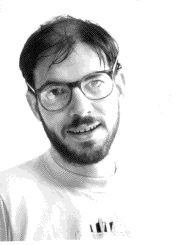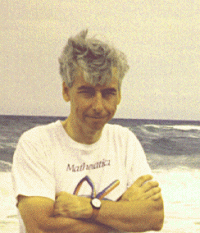
|
The Mathematical Association of America Maryland-District of Columbia-Virginia Section |
- Home
- History
- Main History Page
- Section History Document
- List of Past Officers
- Charter Members
- African-American Participation
- Stories from Section Members
- Section NExT Fellows
- Obituaries
- Smith Award Recipients
- Christensen Award Recipients
- Meritorious Service Award Recipients
- Undergraduate Award Winners
- Meeting Archive
- Past Meetings
- Talk Archive
- Old Section NExT Programs
- Newsletter Archive
- Meeting Minutes Archive
- Miscellaneous Documents
- Meetings
- Minutes
- Fall 2024 Executive
- Fall 2024 Membership
- Spring 2024 Executive
- Spring 2024 Membership
- Fall 2023 Executive
- Fall 2023 Membership
- Spring 2023 Executive
- Spring 2023 Membership
- Fall 2022 Executive
- Fall 2022 Membership
- Spring 2022 Executive
- Spring 2022 Membership
- Fall 2021 Executive
- Fall 2021 Membership
- Spring 2021 Executive
- Spring 2021 Membership
- Fall 2020 Executive
- Fall 2020 Membership
- Fall 2019 Executive
- Fall 2019 Membership
- Spring 2019 Executive
- Spring 2019 Membership
- Fall 2018 Executive
- Fall 2018 Membership
- Spring 2018 Executive
- Spring 2018 Membership
- Fall 2017 Executive
- Fall 2017 Membership
- Spring 2017 Executive
- Spring 2017 Membership
- Minutes Archive
- Newsletters
- Section NExT
- Awards
- Students
- Links
- Search
Fall 2000 Meeting at American University
The fall meeting of the MD/DC/VA Section of the MAA was held on November 17 and 18 at American University, Washington, DC. The program began with a reception and banquet Friday evening, featuring an address by Brian Hayes, writer, Computing Science columnist for American Scientist magazine, and former author and editor of Scientific American. On Saturday there were three invited addresses,
The Saturday program also included contributed papers and exhibits. In addition, the section kicked off its new Project NExT with several activities for participants. Following the final contributed paper session, Dan Kalman, American University, hosted an informal workshop on Mathwright activities available on the internet. Invited Addresses
William GasarchProfessor, Computer Science Department, University of MarylandInvited Address: Mathematics in Theoretical Computer Science Abstract: Professor Gasarch's talk is about how theoretical computer science has both used concepts from mathematics and provided problems for mathematics. He discusses three cases where results in computer science used mathematics of interest. (1) Using the probabilistic method to prove the existence of fast sorting algorithms. (2) Using finite fields to reduce the number of bits needed for two parties to agree they are holding the same string. (3) Using the Graph Minor Theorem. Biographical Sketch: Dr. William Gasarch got his B.S. at SUNY Stonybrook in both Pure and Applied Math in 1980 his Ph.D. in Computer Science from Harvard in 1985. He has been on the faculty at University of Maryland at College Park since then, achieving the rank of Full Professor in 1998. He has always been fascinated with the question. "Given a problem, how hard is it?" This problem takes many forms such as: "How many comparisons to you need to find the 2nd largest element of a list?" or "If Alice has x and Bob has y then how many bits of information do they need to exchange to verify that x=y?" and of course "Does P=NP?" His most recent work has been in communication complexity (that Alice-Bob thing above). 
Brian HayesAuthor and Writer on Mathematics and Related SubjectsBanquet Address: War and the Weather: Notes on the Life and Mathematics of Lewis Fry Richardson Abstract: Brian Hayes' lecture is about Lewis Fry Richardson, and early developer of mathematical models for weather prediction and other problems. In the winter of 1917 Richardson was driving an ambulance for a French infantry division on the Western Front. At the same time, in spare moments behind the lines, he was completing a vast project of mathematical calculation. He had set out to compute the weather -- to predict the temperature, winds and barometric pressure by numerical methods. Such computations are routine today, of course, but the idea was novel then. Unfortunately, Richardson's forecast was not a great success. By reproducing his pencil-and-paper calculations in a computer program, Hayes will illuminate what went wrong. Additionally, he will remark on the quality of mind needed to do arithmetic in such beastly circumstances, a few miles from the trenches. Hayes will also say a few words about Richardson's later work, on applying mathematical methods to studying the causes of war. Biographical Sketch: Brian Hayes writes the "Computing Science" column for "American Scientist" magazine. Formerly he was the editor of "American Scientist", and earlier still was a writer for and editor of "Scientific American". In 1999 he was Journalist in Residence at the Mathematical Sciences Research Institute in Berkeley. His article "Clock of Ages" in "The Sciences" recently won a National Magazine Award as the best essay of 1999. When he is not writing about mathematics and computer science, Hayes is at work on an illustrated book titled "Infrastructures: A Field Guide to the Industrial Landscape", to be published by W. W. Norton. Work on the book is supported by a grant from the Alfred P. Sloan Foundation. He is a member of the MAA and the AMS, a Fellow of the AAAS, and an honorary life member of Sigma Xi. A list of his recent publications, with links to articles is at: http://www.amsci.org/amsci/other/BPH.html. 
Frank MorganSecond Vice-President of the MAA, Dennis Meenan '54 Third Century Professor of Mathematics, Department of Mathematics and Statistics, Williams CollegeInvited Address: Double Soap Bubbles Abstract: Dr. Morgan's lecture is on soap bubble minimal surfaces. Soap bubbles contain an amazing amount of important geometry. Archimedes (250 BC) claimed and Schwarz proved (1884) that a single round soap bubble is the least-perimeter way to enclose a given volume of air. Just this year (2000) Hutchings, Morgan, Ritore', and Ros proved that a double soap bubble is the least-perimeter way to enclose and separate two given volumes of air. Undergraduates have played an important role in this research. Biographical Sketch: Frank Morgan went to MIT and Princeton. He has taught and done research at MIT, Rice, Stanford, and the Institute for Advanced Study, where he held the first Visiting Professorship for Distinguished Teaching at Princeton University. He served as Chair of the Mathematics Department at Williams, and is founding director of a NSF undergraduate research project. His awards for teaching include the Everett Moore Baker Award for excellence in undergraduate teaching at MIT, and one of the first MAA national awards for distinguished teaching (1993). Frank Morgan works in minimal surfaces and studies the behavior and structure of minimizers in various dimensions and settings. He is author of four books: Geometric Measure Theory: a Beginner's Guide, Calculus Lite, Riemannian Geometry: a Beginner's Guide, and The Math Chat Book based on his live, call-in Math Chat TV show and Math Chat column. 
Sonja SandbergProfessor of Mathematics, Framingham State CollegeInvited Address: A Sabbatical Adventure Abstract: Dr. Sandberg's presentation is about her work at the United States Department of Agriculture, where she worked with two agencies, the Food Safety Inspection Services and the Risk Management Agency. To illustrate how a sabbatical provides a unique opportunity to work in an environment that is far removed from academia, she will present examples of her work at the USDA. These will illustrate the importance of mathematics in a federal government policy-making setting. She will also describe the AAAS fellowship program, the benefits of participating in this program and indicate how to apply. Biographical Sketch: Sonja Sandberg has taught at Framingham State since 1985. She received her undergraduate degree in applied mathematics from MIT and her Ph.D. in Mathematical Sciences from Southwestern Medical Center. Her research interest involves using mathematical tools to answer questions in biology and medicine. She received a Bunting fellowship in 1991 to spend a sabbatical modeling the population dynamics of the Lyme disease tick, and recently completed a year sabbatical in Washington, DC, where she worked at the United States Department of Agriculture learning about risk assessment applied to food safety issues, and the economics of crop insurance. This work was supported by a fellowship from the American Association for the Advancement of Science (AAAS). She has presented minicourses at the national meetings and given student workshops at section meetings. |
Copyright © 2012 - The Mathematical Association of America
Please send comments, suggestions, or corrections for this page to Brian Heinold at heinold@msmary.edu
Last Modified: 03/05/2012 - 09:16pm